2024 Advances in Wound Management Pre-course
Event Properties
| Event Start Date | 06-12-2024 |
| Event End Date | 06-12-2024 |
| Location | Crowne Plaza New Orleans French Qtr - Astor |
| Categories | UHMS Directly Provided Course |

Anna Hronek
DPM, FACFAS, DABM, CWSP
Read Bio
Board certified in podiatric surgery and wound care podiatrist discussing clinical offloading techniques of plantar wounds
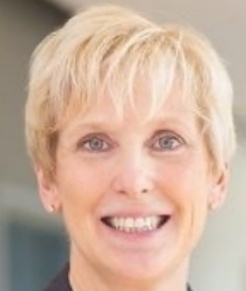
Brenda Freymiller
BSN, CWOCN, CWS
Read Bio
Brenda Freymiller is a Wound, Ostomy, and Continence Nurse from Salt Lake City, UT. She has been a WOC Nurse for 20 years.
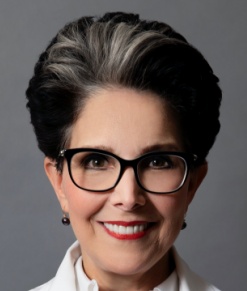
Caroline Fife
MD
Read Bio
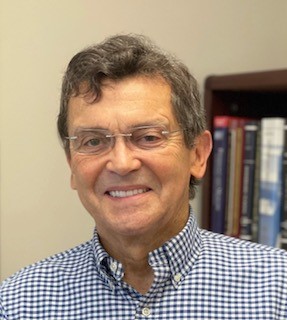
Dick Clarke
CHT-ADMIN
Read Bio
Dick assumed the position of president of the National Board of Diving & Hyperbaric Medical Technology in January, 2009, having previously held this position from 1989-1995. Dick’s background includes service in the British Navy, diving instructor and underwater photographer at the International Underwater Explorers Society and assistant director of the seabed living program ‘Hydrolab’. In 1976, Dick was instrumental in the development of the diver medic program at the Commercial Diving Center, while employed as a saturation diving superintendent with Oceaneering International. Dick taught the diving medicine section from 1976 - 1983 and helped establish the National Association of Diver Medic Technicians, the fore runner of the NBDHMT. He wrote the Board’s first CHT exam. Over the past two decades Dick remains involved in all aspects of undersea and hyperbaric medicine, technology, education and research. His organization has trained over 6,000 healthcare professionals and he has served as a faculty member for the annual NOAA-UHMS Diving Medical Officer Training Course for the past 25 years. Dick has been active within the UHMS, chairing numerous committees and was the UHMS Associates first elected chairman. He heads a research foundation dedicated to the scientific advancement of hyperbaric medicine, and has developed an international consortium that undertakes wide-ranging controlled clinical trials.

Drue Orwig
DO, MBA
Read Bio
Drue Orwig, DO, MBA is a board-certified physician specializing in Wound Care, Undersea and Hyperbaric Medicine, and Emergency Medicine. She has been practicing Wound and Hyperbaric Medicine at CoreWell Health Hospital System and has served as the Section Chief for Wound and Hyperbaric Medicine since 2017. She serves as the Councilor for the Undersea and Hyperbaric Medicine Chapter for the American College of Emergency Physicians and sits on the Education Committee for the Undersea and Hyperbaric Medicine Society. She serves as the Medical Staff Secretary for the Corewell Health West Grand Rapids Hospital System.
Her expertise include: Limb loss prevention, Hyperbaric and Dive Medicine, Advanced technologies in Wound Care.
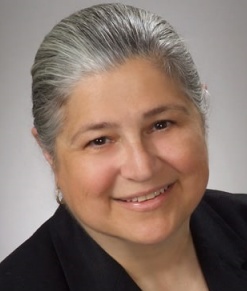
Helen Gelly
MD
Read Bio
Dr. Gelly has been involved in hyperbaric medicine and wound care since 1991. Past positions have included Medical Directorships at academic and community hyperbaric medicine and wound care programs. She started a non-hospital affiliated hyperbaric medicine center which was one of the first UHMS accredited centers. She has been actively involved in billing and reimbursement issues for both facilities and physicians. Until recently, she was the Medical Director of Hyperbaric Physicians of Georgia, a group of physicians dedicated to the practice of hyperbaric medicine and wound healing, with 5 subspecialty boarded physicians in its membership. In addition to lecturing nationally on hyperbaric medicine and wound healing for many years, she was the president of the Gulf Coast Chapter of the UHMS from 2005-2007. Currently, she serves as the Emeritus Medical Director of Hyperbaric Physicians of Georgia, and as C.E.O. for HyperbaRXs.

Shai Efrati
MD
Read Bio
Dr. Shai Efrati is a professor at the School of Medicine and the Sagol School of Neuroscience at Tel Aviv University. He also serves as the director of the Sagol Center for Hyperbaric Medicine and Research at Shamir (Assaf-Harofeh) Medical Center in Israel. Under Prof. Efrati's leadership, the center has grown to become the largest hyperbaric center worldwide, currently treating over 300 patients per day.
Dr. Efrati's expertise extends to internal medicine, nephrology, hyperbaric and diving medicine, and he holds the position of Director of Research & Development at the Shamir Medical Center, affiliated with Tel-Aviv University. Driven by his passion for physiology and thermodynamics, particularly in understanding the physiological barriers that hinder organ function, he initiated a research program focusing on neuroplasticity—the regeneration of damaged brain tissue. This research aims to treat the brain as a tissue, identifying and characterizing non-healing brain wounds and the bottlenecks that impede recovery.
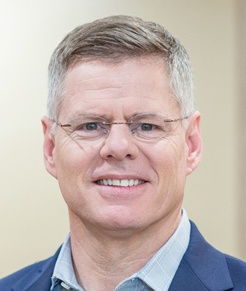
Todd Vento
MD
Read Bio
Experienced Medical Director and Physician with a demonstrated history of success at all levels of the healthcare system. Skilled in Clinical Medicine (Infectious Diseases/Internal Medicine), Program Development, Healthcare Leadership, Population and Global Health, and Medical Education. Strong healthcare professional with a Master of Public Health (MPH) in Epidemiology/International Health from Johns Hopkins School of Public Health. Retired Army Medical Officer with extensive operational and leadership experience, providing infectious diseases/public health expertise in support of military and civilian healthcare programs on five continents.
| 0755-0815 |
Introduction / CE Requirements |
| 0815-0900 |
Continued Importance of Transcutaneous Oximetry in the Current Era and Evidence-Based Interpretation: Dick Clarke, CHT-AdminAbout the Lecture
This lecture will review the evidence-based performance and continued relevance of transcutaneous oximetry during hyperbaric consultation and case management of lower extremity healing deficient wounds. The lecture will provide guidance to sequential testing and conclude by summarizing data interpretation.
|
| 0900-0930 |
Antimicrobials: Who’s Who in the Zoo, Old and New: Todd Vento, MDAbout the Lecture |
| 0930-1000 |
Advancing Biofilm-Based DNA Microbial Identification and Treatment in Chronic Wounds: Drue Orwig, DO, MBAAbout the Lecture
Learn a new and effective way to diagnosis a biofilm and explore a very effective treatment regimen through case reviews. This technology is a game-changer and will allow you to heal some of the most difficult wounds out there!
|
| 1000-1100 |
The Development of Hyperbaric Medicine from Decompression to Regeneration: Shai Efrati, MDAbout the Lecture
Hyperbaric medicine utilizes variations in environmental pressure and gas composition to achieve specific biological outcomes. In this field, pressure serves as the primary agent in treating decompression sickness and gas emboli, while oxygen is pivotal in addressing acute ischemic conditions such as for example carbon monoxide poisoning or acute retinal artery occlusion. Recent years have seen emerging evidence that certain fluctuations in pressure and gas levels can initiate a biological cascade essential for regeneration in multiple damaged organs. This phenomenon, known as the Hyperoxic-Hypoxic Paradox, stimulates stem cell proliferation and migration, mitochondrial activation, angiogenesis, and gene expression integral to regenerative processes. In this lecture, we will explore the various 'active ingredients' of hyperbaric medicine and discuss the range of pathologies that can benefit from each therapeutic modalities
|
| 1100-1130 |
DME coverage requirements and getting dressings that patients need: Brenda Freymiller, BSN, CWOCN, CWSAbout the Lecture |
| 1130-1200 |
The vascular origin of pressure injuries/ulcers and implications for prevention and treatment: Caroline Fife, MDAbout the Lecture
Despite a concerted focus on prevention, the incidence of pressure injuries/ulcers has not decreased in the past 5 years and during the pandemic, the prevalence rates increased. There is overwhelming evidence that Stage 1 pressure injuries are ischemia reperfusion injuries, and that DTIs are tissue infarctions which evolve into large necrotic ulcers as a result of an “inside out” pattern of tissue loss. Both Stage 1 and DTIs follow an anatomical distribution based on the angiosome concept, a 3 dimensional tissue block supplied by a named artery and vein. The development of these problems is related to hemodynamic risk factors such as low mean arterial pressure and/or low diastolic pressure. Current “pressure ulcer prevention” protocols fail to include modifiable hemodynamic factors in the mitigation strategies. If DTIs represent tissue infarctions, there might be a role for HBOT to mitigate tissue loss if it is possible to identify them early enough. The recognition of pressure injuries as either ischemia reperfusion injuries or infarctions has significant implications for prevention and explains why not all pressure injuries/ulcers are medically unpreventable.
|
| 1300-1400 |
Audit survival in the wound center: review of various audit types, risk associated with and reasons for recoupment provided by various MACs: Helen Gelly, MDAbout the Lecture |
| 1400-1500 |
Pyoderma gangrenosum – using the PARACELSUS score instead of biopsies: Caroline Fife, MDAbout the Lecture
can lead to amputation. It is considered rare because it is rarely diagnosed. It can begin as a result of minor trauma. About 50% of patients have an underlying autoimmune or inflammatory condition. It is a diagnosis of exclusion which usually requires treatment with systemic immune modulating drug. Biopsies are performed to rule out other pathology but are not reliable for the diagnosis. A new tool called the PARACELSUS scoring system can reliably diagnose PG based on major and minor clinical criteria and is superior to biopsy to identify patients who may benefit from a trial of steroids.
|
| 1500-1515 |
BREAK |
| 1515-1545 |
Clinic Offloading of Neuropathic Foot Ulcers: Anna Hronek, DPM, FACFAS, DABM, CWSPAbout the Lecture
Overview of biomechanics of gait in neuropathic individuals as it pertains to clinical offloading of plantar foot ulcerations.
|
| 1545-1645 |
Total Contact casting hands on: Anna Hronek, DPM, FACFAS, DABM, CWSP |
| 1645-1715 |
Course Wrap Up, Q&A with Faculty |
